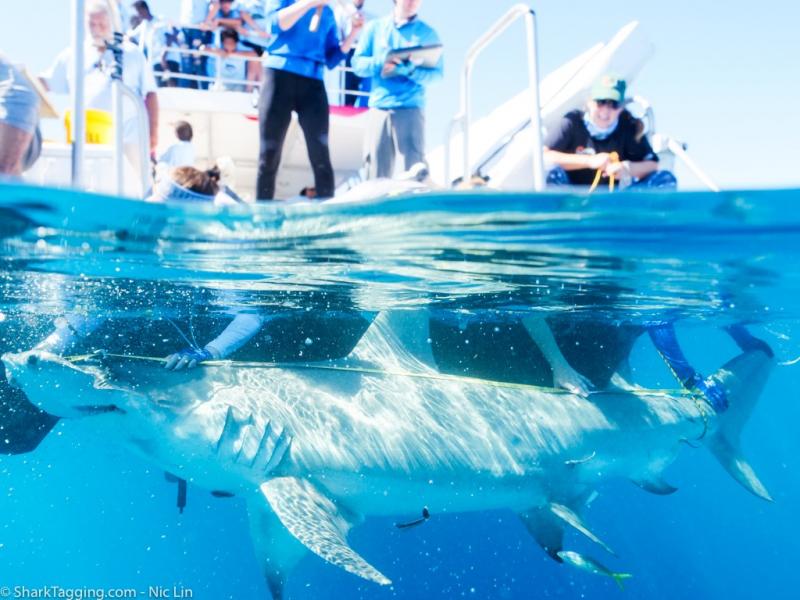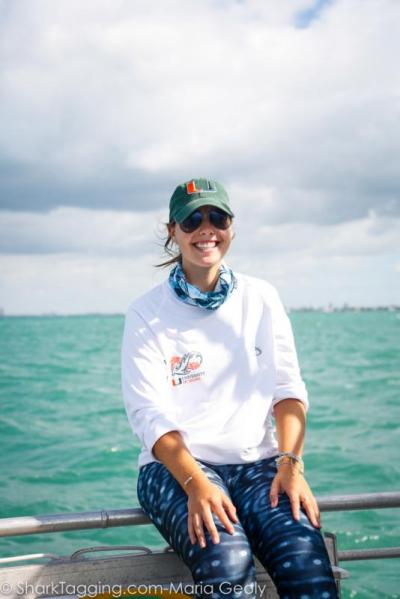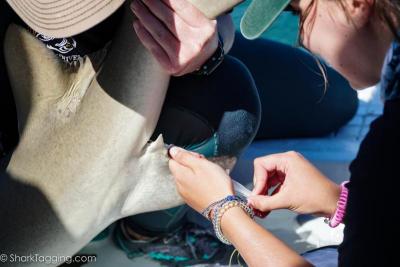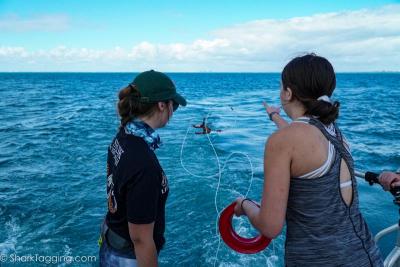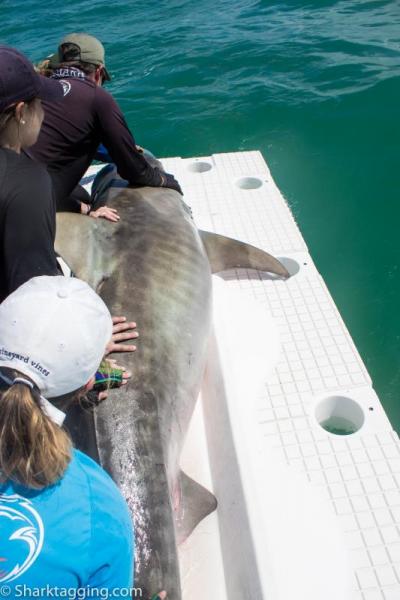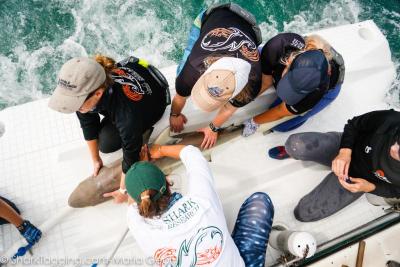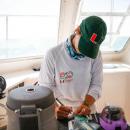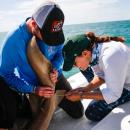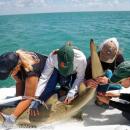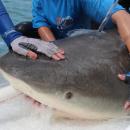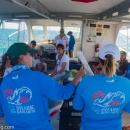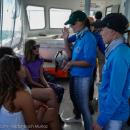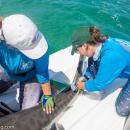Marion native tags sharks off the coast of Miami
MIAMI — Isabella Horstmann grew up in Marion, studied local scientists, and said she always wanted to be a marine biologist.
Now, as a senior at the University of Miami, she is part of a 35-member team that tags sharks off the coast of Florida, and collects various types of data to better understand some of the ocean’s most powerful, and important predators.
Horstmann said that she was inspired by the work of Greg Skomal, a renowned shark researcher based in New Bedford, and the Woods Hole Oceanographic Institute.
Teams of seven led by Dr. Neil Hammerschlag travel off the coast of Miami to track down sharks, and take measurements of their length, width, and physiological factors that indicate their health, and significance to the ecosystem.
Horstmann said that after using bait to catch the sharks, they are pulled onto the research boat, and held down by a “jumping team” of three people, one for the head, midsection, and tail. While scientists collect data, the sharks are continuously showered with water, and a system of pipes feeds water to the sharks’ gills, to ensure that they can breathe.
She added that if the animals appear to be unhealthy, or in too much stress, they are set free, as their health and safety are a second priority only to that of the people on board. The data collection process where sharks are out of the water typically lasts just five to eight minutes.
She added that due to the extensive training required to participate in expeditions, and teamwork with fellow researchers, she has “never felt unsafe on the boat.”
Horstmann has found nurse sharks, which typically measure about five feet, as well as larger bull sharks that average about seven feet long.
She said she also comes across tiger, and hammerhead sharks on occasion, and that a 10-foot-long hammerhead was perhaps the most beautiful shark she had ever seen.
For her senior thesis, Horstmann has been taking blood plasma, and muscle tissue samples to study the diet of the sharks she captures.
“It’s important to know what is at the base of their food source,” she said.
For example, if a shark’s prey has been eating seagrass, Horstmann said “that energy is transferred all the way up to the shark”, and detectable in her tests.
If that’s the case, she says it indicates that sharks have been feeding closer to shores, and that protective measures should be taken.
By using plasma as a short-term, and muscle tissue as a long-term indicator of the “carbon base” of a shark’s diet, Horstmann is able to find useful information about where the shark has been, and what that means for a conservation standpoint.
Despite their “terrifying connotation,” Horstmann said that sharks are crucial to the ecosystems they live in. They often target sick fish, which mitigates the spread of disease that could wipe out entire fish populations.
Another interesting research topic from one of her fellow students is centered around how nurse sharks respond to boat traffic, and the urban noise of Miami. Horstmann said that this study uses acoustic tagging and receivers to monitor the shark’s movement patterns in response to various stimuli.
Horstmann said that the biggest takeaway from her research has been the “concerted effort to teach others.”
On each trip, researchers are accompanied by a group of “citizen scientists,” often underprivileged kids from in and around Miami.
One trip that was especially meaningful to her accompanied a group of girls from the Females in Natural Sciences, or F.I.N.S. program that helps give hands on training to girls to help offset the gender disparity in STEM careers.
Horstmann said that the girls aged 9 to 14 are “the next generation of scientists” and that it was interesting to see young girls with an interest in her field of study.



